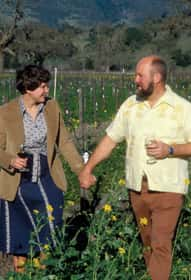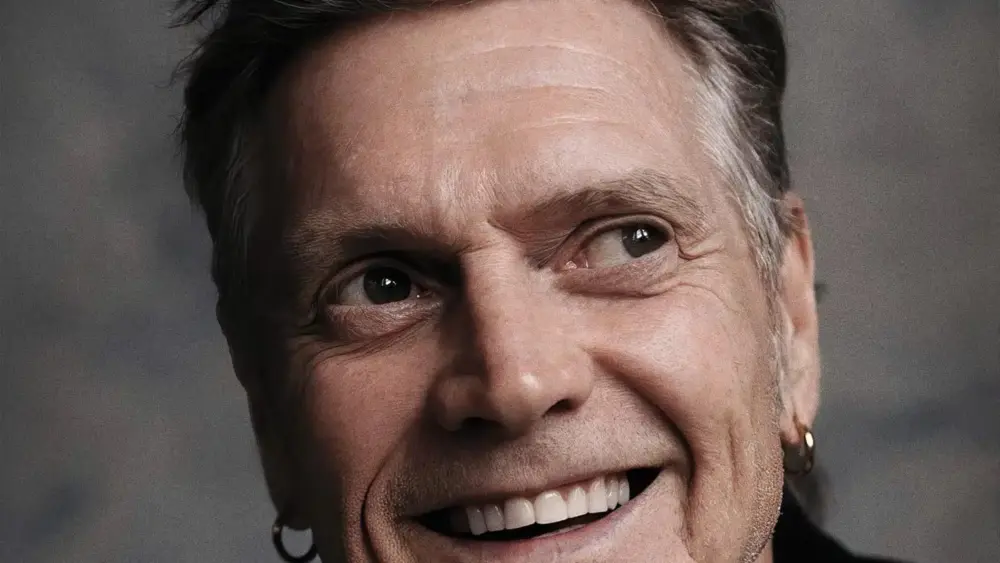Bonny Meyer is setting a high bar for impact investing.
By no means is Oakville’s Bonny Meyer anti-business. To the contrary, Meyer Family Enterprises, of which she’s principal, is broadly invested. She is, on the other hand, anti-exploitative business, anti-insensitive business and anti-selfish business—and she’s willing to talk about it. “We’ve been using up Earth and her gifts faster than they can be replenished for 40 years now at an ever-quickening rate,” she asserts. “It’s time to put on the brakes and change the model to one that replenishes nature and society both.”
As an investor, she’s been putting her money where her mouth is in an attempt to leave Earth a better place than it was when she arrived. “It’s our responsibility to use our assets for positive ends,” she asserts. “Business, at its best, is creative, solves problems and honors both people and planet.”
As a result of such views, Meyer has emerged as something of an evangelist for that elusive goal of doing well by doing good. Her style, called “impact investing,” is described in Regulations of Investment Advisors as investments “made into companies, organizations and funds with the intention of generating measurable beneficial social or environmental impact alongside a financial return.” It’s what used to be called venture philanthropy and goes beyond socially responsible investing (SRI). Lauren Gensle in a recent Forbes magazine article featuring Meyer (“Double-Duty Dollars,” June 15, 2015) summarized it as “…targeted [investments], funneling money into businesses (often startups) likely to do good,” pointing out that it’s also “riskier than the traditional stock-screening approach, [but] has a potentially higher change-the-world payoff.”
To some hard-shelled old timers, such aspirations sound like New Age ramblings, but Meyer is relatively hard-shelled herself and she’s dedicated to putting her money where problems really are. As it turns out, she’s hardly alone. Some 1,260 companies—worth $45 trillion in assets—are now signatories of a United Nations’ “principles for responsible investment,” and Meyer looks increasingly like a leader among the socially conscious rather than a space cadet. Those who know her well describe Bonny Meyer as down-to-earth, smart and thoroughly grounded in her investment style.
From humble beginnings
How Meyer and her family accumulated significant assets in the first place is a classic American success story: Bonny, a middle-class girl, and her husband, Justin, a working class guy, were UC Davis graduates. She majored in psychology and mathematics, he in enology and viticulture. They crushed grapes together the same week they were married in 1972. As Bonny recalls, “We were broke. Justin owned a dog and I owned a car. Neither one of us had any money.” (Full disclosure: I first met Justin Meyer in junior high school in 1950 and am still close friends with Bonny and the Meyer family.)
On the other hand, both were youthful achievers and possessed excellent educations. Moreover, Justin was an ex-Christian Brother who’d been trained by that group’s renowned winemaker, Brother Timothy. The couple also had a financial backer and friend, Ray Duncan, a Colorado oil entrepreneur interested in the wine business. Duncan recognized the positive potential of the Meyers’ dream, which was to create a great, single-variety winery based on the European model: Silver Oak Cellars made only Cabernet Sauvignon.
But what Cabernet Sauvignon: 25 years after that first impecunious crush, Wine Spectator would report, “Silver Oak Cellars has achieved a following most vintners can only dream of.” It achieved its status with vineyards and wineries in both Sonoma and Napa counties, American oak aging and a remarkable attention to detail.
The Meyers stuck with other important personal goals, too, which were “to have a good life, make a really good wine and have fun in the process,” Bonny recalls. With three children, they accomplished those things and more. They were also noted locally as generous, civic-minded donors, who paid above-average salaries and commanded great loyalty from employees. They were creative in their giving and responsible in their investing, as well as altogether pleasant human beings.
In 2001, however, with ill health threatening them both, Justin and Bonny sold their interest in Silver Oak Cellars to Duncan for $110 million. When Justin called me with the news, he said something revealing: “No one needs this much money.” The family still owned another winery, oil interests in the Dakotas plus ample real property. As Bonny later remarked, they didn’t want wealth to ruin their or their children’s lives. Family was more important.
The philanthropic era of those lives seemed to be beginning in earnest when, in 2002, Justin suddenly died. “We’d crafted an estate plan,” Bonny recalls, “but had been looking forward to a long retirement together. His death was the ultimate shock.” Some friends worried openly about how Bonny would fare. They needn’t have bothered.
Finding her vision
At first, Bonny was in a state of shock over the loss of her husband and partner, who had been nothing if not a large personality, so for a time, she let advisors oversee the family’s conventional portfolio of trusts and funds. She eventually sold one of the family homes for $5 million to create a charitable kitty, a small donor-advised fund. Then she employed Rockefeller Philanthropy Advisors to help create a giving plan for her family. She acknowledged her two adult sons and one adult daughter had their own philanthropic interests, so together they began to explore philanthropic support of some innovative social entrepreneurs locally and worldwide. The family continues to support empowerment programs for at-risk adolescents and adults.
In 2004, Bonny attended a Global Philanthropy Forum, and, she says, “a light went on in my head.” She realized that her charitable efforts “were much more fulfilling to me than my very balanced, very boring investment portfolio,” so she set out on a new financial direction, seeking to reshape her portfolio with a keen eye for socially and environmentally beneficial outcomes.
Some advisors—and even some family members—resisted her new direction, so she assembled a relatively small team and began to forge her own path. While most of her assets, for a time, remained in the traditional portfolio, change was underway.
Her new investment direction resulted, in some measure, from her realization that creative options were available. Instead of giving money away every year via grants to FINCA, a microcredit nonprofit, for instance, she began to use the assets in her portfolio to annually guarantee a $2 million loan funneled into 50 microloan organizations in third-world countries via MCE Social Capital. Over the course of her guarantee, 8,222 loans have been made, lifting 70,000 people out of poverty and resulting in a much larger impact than her previous annual donation would have ever created.
“It occurred to me,” she explains, “that I could do a lot more good in the world—and enjoy it more—by investing in social entrepreneurs” like Bridge International Academies of which she was an early backer. Bridge has, so far, built 400 nursery and primary schools in the slums of Kenya and Uganda, serving nearly 120,000 students (and aiming at serving 500,000). All this achieved while her investment value has doubled.
Timing, as has been said, is everything. As Bonny became increasingly committed to socially and environmentally grounded investing, so did the larger financial world. Almost 70 percent of the 300-plus funds now listed on ImpactBase (an online database of impact investing funds and products) have been launched since 2009. It’s an idea whose time seems to have come. Advisory firms such as Imprint Capital, founded in 2007, shared her vision. They seem “to get it,” she says, so she now employs Imprint Capital (recently acquired by Goldman Sachs) as her principal advisor.
Leading by example
Bonny takes her fiduciary responsibilities seriously. She manages the family’s assets while producing a respectable return and with holdings that are both socially and environmentally beneficial. Her long-term goal is to have 100 percent of her portfolio invested in impact companies by 2020. Right now, as the aforementioned Forbes’ article explains, 23 percent of her portfolio “is in public companies selected through do-gooder funds like Parnassus Core Equity Fund and Generation Global Equity Fund. Another 23 percent is in fixed income through funds like TAAA-CREF Social Choice Bond Fund and Breckenridge Sustainable Bond Strategies.” Other holdings include The Ecosystem Technologies, Barak Sustainable Trade Finance Fund and TPG Alternative & Renewable Energy Technologies. “Some have a very low return but higher social benefits,” she explains. “Some have a very solid, healthy return but not as high a social impact.”
Investors with less generous incomes (but equally generous spirits) have been able to support impact companies since the founding of New Alternative Fund in 1982. Today Green Century Funds, American Century Funds, Nueberger Socially Responsive Fund, Willow Green Growth, Global Impact Investing Network, and various Parnassus Investments, among others, are also open to social investors with less capital. Goldman Sachs and Bank of America have recently opened impact investment funds, and more choices are rumored to be in the pipeline.
Meanwhile, Meyer Family Enterprises continues its dedication to philanthropy. Organizations as diverse as the Napa Valley Community Foundation, Kickstarter, The Central Asia Institute, Educate Girls Globally and The Amazon Conservation Team are beneficiaries. These groups share with Bonny Meyer a desire not merely to temporarily solve problems but a desire to create an infrastructure of accomplishment that allows greater opportunities long term and better living conditions for all.
“The old paradigm,” she explains, “is that you make as much money as you can any way that you can—probably creating damage to people and planet in the process—then you give part of it back to help some folks and to assuage your guilt. The new paradigm is to look at investing and philanthropy in a holistic way and to help fund, with our investment dollars, the vast, innovative solutions that will make all things better in the first place. This,” she says, “isn’t a new trend in investing. It’s the only true path to restoring society and our earth.”
Gerald W. Haslam’s books have won awards for both fiction and nonfiction. His most recent (with his wife, Janice) is Leon Patterson: A California Story (Devil Mountain Books, 2014). See more at www.geraldhaslam.com.



